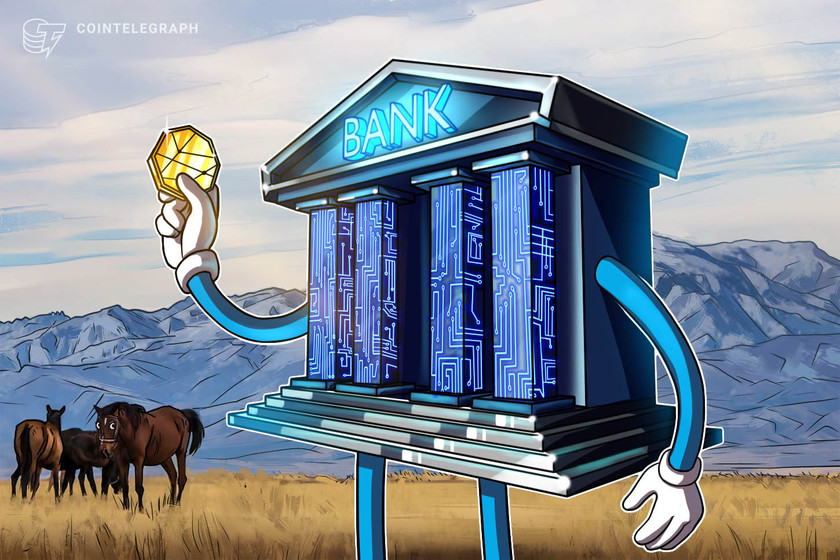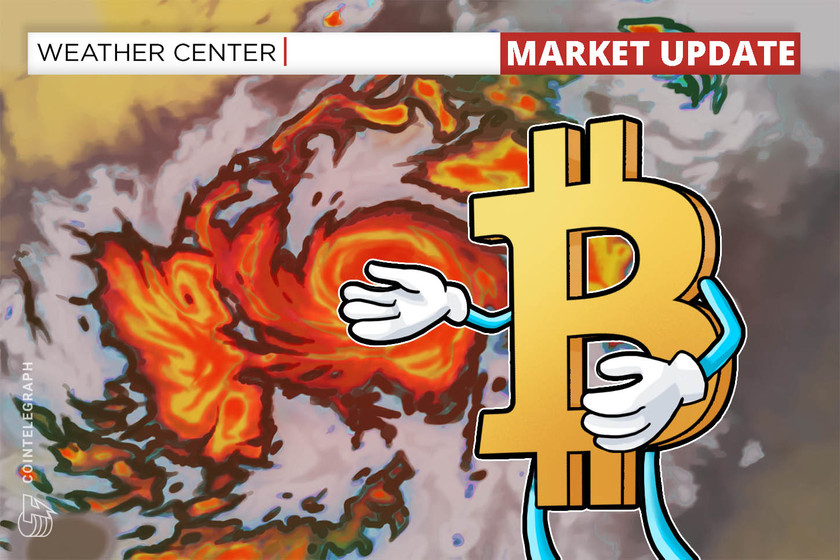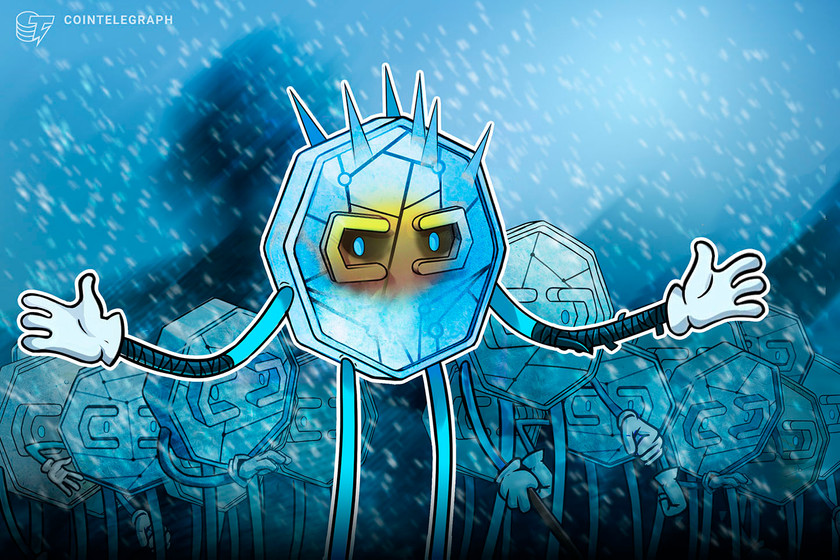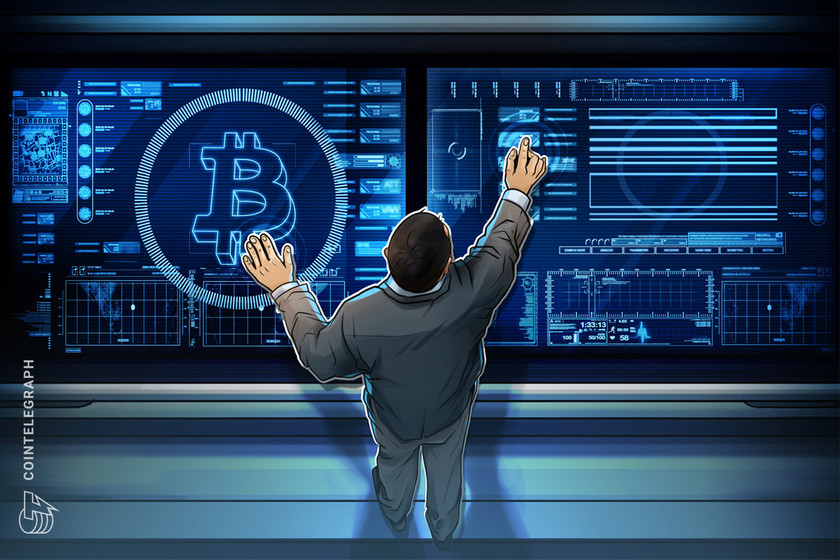What is BNB auto-burn and how does it work?


Based on the price of BNB and the number of blocks generated on BSC during the quarter, the BNB auto-burn mechanism automatically modifies the amount of BNB to be burned.
BNB and its role in the blockchain ecosystem
Binance Coin (BNB) is the Binance ecosystem’s native cryptocurrency. Launched in 2017, BNB was originally presented as an ERC-20 token on the Ethereum blockchain with a total supply of 200 million. In 2019, Binance started its mainnet swap and migrated all BNB tokens to BNB Chain.
Related: A beginner’s guide to the BNB Chain: The evolution of the Binance Smart Chain
BNB Chain is composed of two blockchains, both powered by BNB:
- BNB Beacon Chain: Previously called Binance Chain, this blockchain handles BNB Chain governance functions such as voting and staking.
- BNB Smart Chain (BSC): Once known as the Binance Smart Chain, this blockchain uses the Ethereum Virtual Machine to support smart contracts and is fully compatible with Ethereum’s tools and decentralized apps (DApps).
The native Binance Coin is now an essential part of the Binance ecosystem. It is used to power the operations of the Binance and Binance.US exchanges, including other applications built on the BNB Chain, such as:
- PancakeSwap
- Biswap
- ApeSwap
- Autoshark Finance
- Avarice
- Libera.Financial
- Nominex/Nomiswap
- The age of dinosaurs
- DEX Finance
- Open Leverage
These are just a few of the many dApps built on the BNB blockchain. Binance also remains the largest cryptocurrency exchange by trading volume and is one of the most popular exchanges in the world.
What is a coin burn?
A coin burn is when a cryptocurrency project destroys some of its coins, often to reduce the circulating supply and increase the value of the remaining coins. The coins are sent to a dead crypto wallet with an unknown private key, which means that these coins can never be spent again.
Coin burns are often conducted on a quarterly or semi-annual basis. Binance, for example, has committed to burning BNB coins every quarter until 100 million BNB are destroyed. This will leave a total supply of 100 million BNB — the maximum possible supply of BNB.
Related: Buyback-and-burn: What does it mean in crypto?
Blockchains and crypto protocols do periodic coin burns and token burns for a couple of reasons, including:


How is BNB burned?
There are coin-burning mechanisms by which BNB is burned, as explained below:
Real-time burning mechanism (BEP-95)
The first is the Binance Evolution Proposal (BEP)-95 burning mechanism. Through BEP-95, BNB is burned in real-time by burning a portion of the gas fees spent on BSC. Since the 2021 upgrade of the BNB Smart Chain, BEP-95 has continued to burn around 860 BNB daily.
Binance CEO Changpeng Zhao implemented BEP-95 to accelerate BNB’s burn rate, which was going slower than planned. By burning part of the gas fees collected by each block’s validators, BEP-95 provides a constant stream of BNB to be burned.
BEP-95 is completely reliant on the BSC network, so it will continue to burn BNB after the 100 million burn goal has been reached. BEP-95 burn progress can be tracked via the BNB Burns Tracker Bot on Twitter:
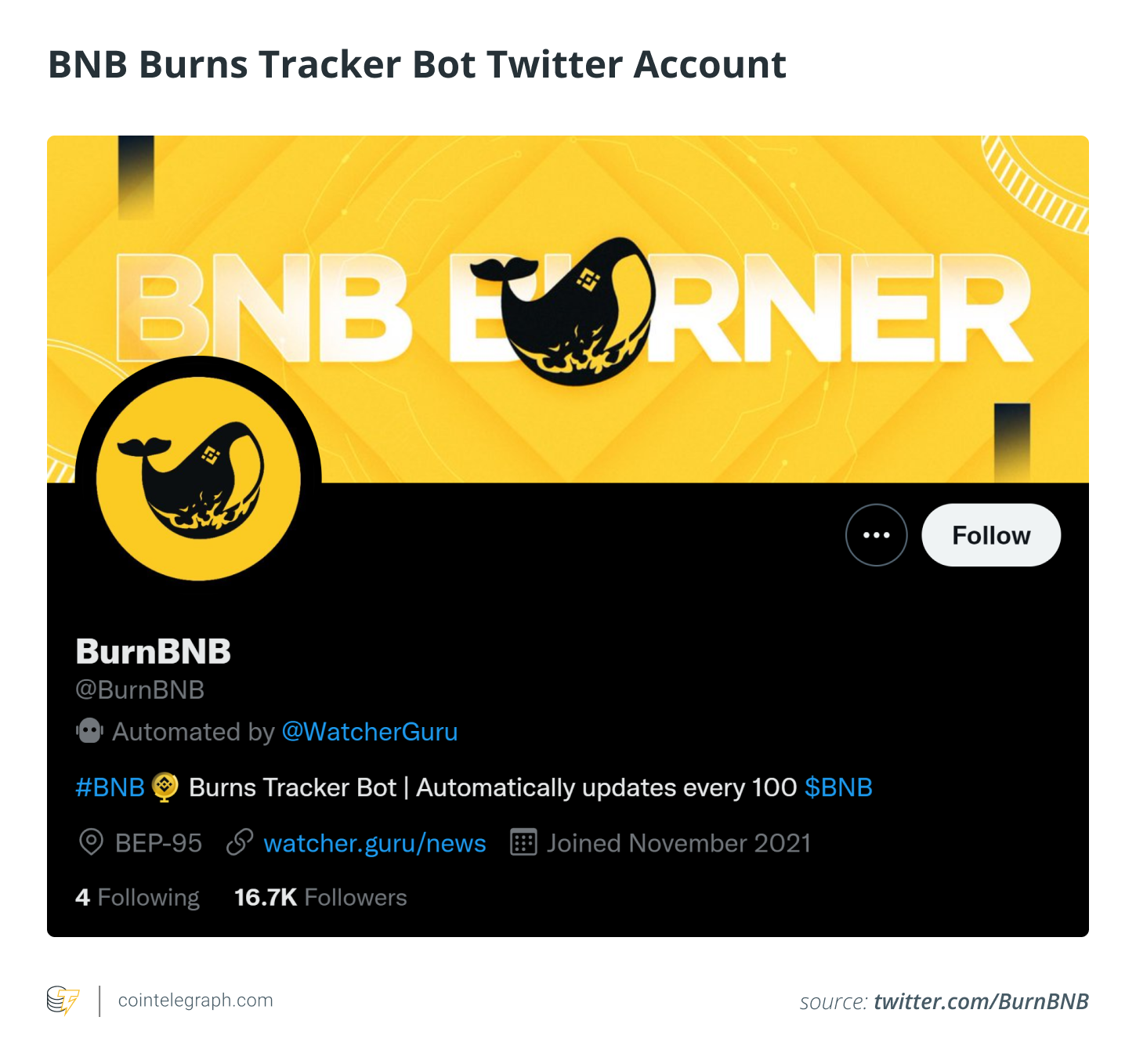

Quarterly auto-burn
The second method is the scheduled quarterly burns conducted by Binance. In these burns, a specific amount of BNB is bought back from the open market and destroyed. The first burn was conducted in October 2017 and burned 986,000 BNB.
The quarterly burns are conducted using Binance’s profits and are announced well in advance. The specific amount of BNB to be burned is based on several factors including overall profitability, BNB circulating supply and the number of blocks produced per quarter. As of the most recent burn in April 2022, a total of 1,839,786.261 BNB have been burned:


What is BNB auto-burn?
BNB auto-burn was created alongside the launch and rebranding of Binance Chain and Binance Smart Chain into BNB Chain. According to Binance, the auto-burn mechanism was designed to maximize the BNB token’s value and provide a sustainable and safe long-term growth plan for the BNB ecosystem.
Binance used to do quarterly BNB burns based on the BNB trading volume on their exchange. However, quarterly burns were replaced by BNB auto-burn in December 2021.
The auto-burns are still done quarterly, but they are no longer based solely on the trading volume on Binance.
The BNB auto-burn mechanism is automated to adjust the quantity of BNB that will need to be burned depending on two factors:
- BNB price
- Number of blocks generated on BSC per quarter
According to Binance, the new BNB burning mechanisms provide better transparency and are more predictable than the previous quarterly burn method. According to the Binance team, the new auto-burn mechanism will help stabilize the BNB price and protect it from large fluctuations.
How does BNB auto-burn work?
From a technical perspective, BNB auto-burn uses on-chain information from the BNB Smart Chain to calculate how much BNB should be burned. This is how the mechanism “adjusts” the burn amount.
The burn amount is also influenced by supply and demand dynamics, which means that when the price of BNB declines, the burn rate increases. As previously mentioned, coin burns increase a cryptocurrency’s value.
BNB auto-burn was designed to remain independent of BNB trading volume on Binance (which used to be its sole basis). This is to assure the BNB community that the process is verifiable, objective and transparent.
The goal is to continue running auto-burn until the 100 million mark. It will do so automatically using the formula below:


In the equation above, B represents the total amount of BNB to be burned and N represents the number of blocks produced on the BNB Smart Chain during the quarter. The average block time is 3 seconds, setting the approximate value of blocks produced per hour at 1,200 blocks. A standard computation would yield the value of N as approximately 2,592,000 blocks. The value may fluctuate depending on exactly how many days there are per month during a specific quarter.
P is for BNB’s average price at the time. The average price fluctuates within a range of 10% to 20% per day, and the median value is determined by taking a sample based on an accepted oracle provider, such as ChainLink, for BSC. This is typically carried out every 10,000 blocks and takes around 8.3 hours to produce.
K is initially set at 1000 and is a constant price anchor. Its value is subject to change and largely depends on BNB Smart Chain’s community. Members can submit a BEP proposal as well as cast a community vote to update this value.
BNB quarterly burn
The older quarterly burn mechanism was updated to quarterly auto-burns. Auto-burn achieves the same objective but is more efficient and transparent. The chart below shows the anticipated quarterly BNB auto-Burn amount for a variety of BNB average prices:


How to check BNB auto-burn history?
BNB auto-burn history can be tracked. The website keeps a record of all previous burns including details of each burn:


For example, if we click on the latest burn, Burn #19, we can see the following details:


So, how much BNB has been burned till now? To date, the total BNB burned is 35,750,684.88. Per current price data, this is equivalent to $7,866,304,917.03. You can also follow real-time values and details about BNB burning events.
When is the next BNB burn?
The latest BNB Burn took place on April 19, 2022, destroying 1,830,382 BNB, or $772,363,806, via auto-burn. There is no specific date yet for the 20th burn, but it is expected to happen anytime between July 16-20, 2022.
Typically, Binance CEO Changpeng Zhao announces BNB burn dates on Twitter, so it’s worth watching that space for updates on the next auto-burn.








